AI Reflection Project Cycle and Ethics Class 9 Notes – The CBSE has changed the previous textbook and the syllabus of Std. IX. The new notes are made based on the new syllabus and based on the New CBSE textbook. All the important Information are taken from the Artificial Intelligence Class IX Textbook Based on CBSE Board Pattern.
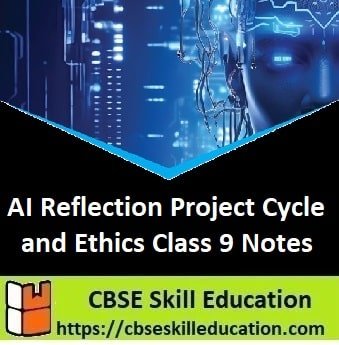
Learning Outcome – To identify and appreciate Artificial Intelligence and describe its applications in daily life.
AI Reflection Project Cycle and Ethics Class 9 Notes
Introduction to AI
AI stands for artificial intelligence. The term artificial intelligence was coined by Stanford researcher John McCarthy in 1956 and combines the two words artificial and intelligence.
- Artificial – Artificial refers to something created or produced by humans rather than existing naturally.
- Intelligence – The ability to acquire and use knowledge and skills is referred to as intelligence.
Definition: Artificial intelligence (AI) is the ability of machines to do cognitive tasks such as thinking, perceiving, learning, problem-solving, and decision-making. It is based on how individuals use their brains to observe, learn, figure out, and make decisions.
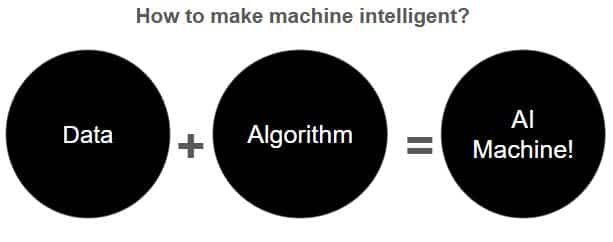
Venn Diagram of AI
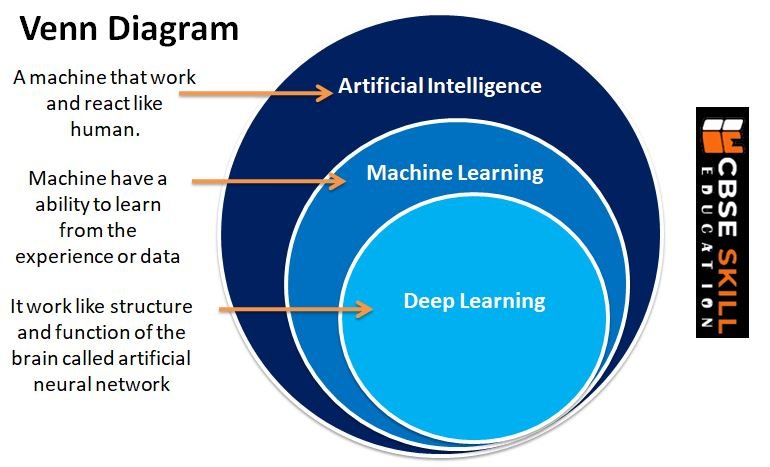
- Artificial Intelligence – Artificial intelligence (AI) is the simulation of human intelligence in robots that have been trained to think and act like humans. The term can also refer to any machine that demonstrates, like humans, the ability to learn and solve the problem is Artificial Intelligence.
- Machine Learning – Machine learning is a part of an Artificial Intelligence application in which we give data to the machine and allow them to learn for themselves. It’s essentially getting a machine to accomplish something without being specifically programmed to do so.
- Deep Learning – Deep learning is a part of Artificial Intelligence that uses neural networks with multilayer. Deep learning analyzes the data, learns the data and solves the problem the same as a human. Deep learning requires the machine to be educated with a large quantity of data in order to train itself.
Application of AI
Some of the AI applications are –
- Face Lock in Smartphones – Nowadays, mobiles come with face lock systems. In this mobile, the front camera detects and captures the face and matches it with the features image, and if it is matched, then the phone will be unlocked.
- Smart assistants – smart assistants like Apple’s Siri and Amazon’s Alexa—recognise the speech patterns of the user and provide a useful response.
- Fraud and Risk Detection – Now AI can identify and prevent fraud-related activities by analysing the data. AI also helps the bank to push their banking products based on the customer’s purchasing power.
- Medical Imaging – The AI application is used to read and convert 2D scan images into interactive 3D models that enable medical professionals to gain a detailed understanding of a patient’s health condition.
Three Domains of Artificial Intelligence
There are three types of domain in Artificial Intelligence.
- Computer Vision (CV)
- Data Statistics (Data for AI)
- Natural Language Processing (NLP)
1. Computer Vision (CV)
Computer vision allows computers and systems to extract useful information from digital photos, videos, and other visual inputs. The goal of Computer Vision is to take necessary action after identifying an object or person in a digital image.
Quick Draw Game based on Computer Vision – CV
Quick Draw is an online game developed by Google. This game can draw a picture of an object or idea based on guesses given by the user.
Game link – https://quickdraw.withgoogle.com/
2. Data Statistics (Data for AI) –
Data statistics is a collection of facts, observations, or measurements used to analyse the data using mathematical methods to make decisions. Data statistics is a part of data science and helps the system to collect a large amount of data, analyse it, interpret it, maintain sets of data, and extract meaning from them using mathematical formulas.
Rock, Paper, Scissors AI Game Based on Data Statistics
Rock, Paper, Scissors is an easy game to play. Each player chooses one of the three things (typically by creating the appropriate hand shape on three counts!) and the following rules are used to determine who won that round:
- Paper wraps (beats) Rock
- Scissors cut (beat) Paper
- Rock blunts (beats) Scissors
The purpose of the game is to guess your opponent’s choice and select the proper object to defeat them.
Game link – https://next.rockpaperscissors.ai
3. Natural Language Processing (NLP)
Natural language processing (NLP) is a branch of artificial intelligence. Natural language Processing has the ability to understand text and spoken words in the same manner that humans can.
AI Games related to Natural language Processing (NLP)
- Semantris is a word association game developed by the Google team that uses machine learning to make associations between words.
Game link – https://research.google.com/semantris
Learning Outcome – Identify the AI Project Cycle framework.
Introduction to AI Project Cycle
The AI Project Cycle is a step-by-step process that a company must follow in order to derive value from an AI project and to solve the problem.
There are five different stages of AI Project Cycle.

Why do we need an AI Project Cycle?
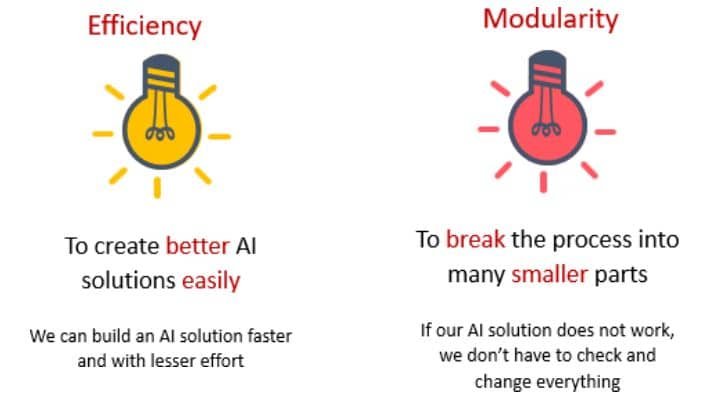
How to use project cycle in AI project
Let’s see one example: suppose one farmer has a cotton field, and he is getting a loss in agriculture due to his inability to manage pests in the field. Here the AI project cycle can help to identify which worm is responsible and how much pesticide farmers have to use.
- Step 1: First you have to know which of the worms is responsible for affecting the cotton crop; you will collect the following data. This is problem scoping.
- Images of the pest
- Farmer Name
- Village Name
- Farm size
- Pesticide usage
- Step 2: Whatever the above problems are, first you have to know that the above data is accurate and reliable. To do this, you have to acquire the data from different sources. This is known as data acquisition.
- Step 3: Now you have to explore the data; researchers can identify patterns and trends. You also want to know how much pesticide is used and other relevant factors. This is known as data exploration.
- Step 4: After exploring the data, now you can develop the AI-enabled app, which will take photos of the field using mobile and help to identify the worms and tell the farmer how much pesticide they have to use. This is a data modeling stage.
- Step 5: Now you have to make your model before stating; first, you have to test it in as many ways as possible. The stage of testing the models is known as Evaluation.
- Step 6: The last stage, where you are make the model, is known as Deployment.
1. Problem Scoping
Whenever we begin a new project, we encounter a number of challenges. In fact, we are surrounded with issues! These issues might be minor or major; sometimes we overlook them, and other times we require immediate attention.
To understand a problem, determine the different aspects that affect the problem, and define the project’s goal are problem scoping.
How to Identify the problem Scoping in AI project
Follow the following steps to identify the problem scoping from the project –
- Understand why the project was started.
- Define the project’s primary objectives.
- Outline the project’s work statement.
- Determine the most important goals.
- Choose important milestones.
- Determine the major constraints.
- Make a list of scope exclusions.
AI can acquire data from the different sources
AI can acquire data from different data sources, see the figure below.
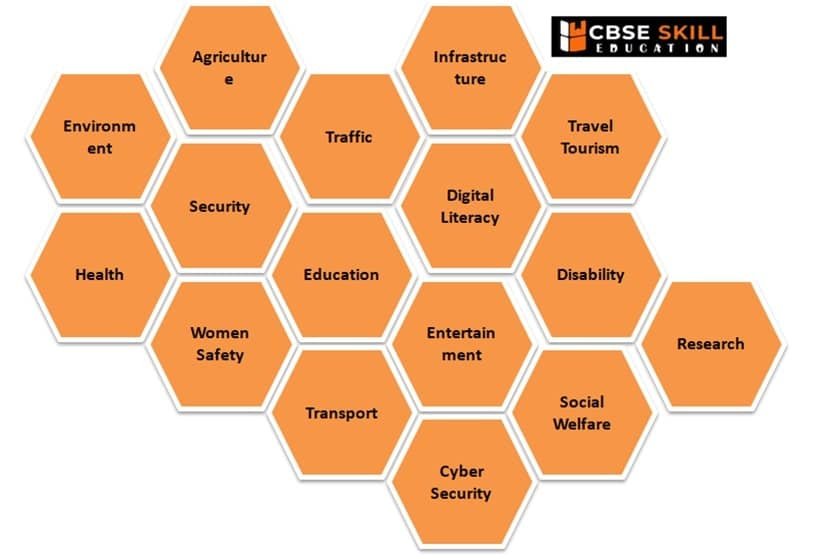
What is 4Ws problem canvas
The 4Ws helps to identify and understand the problem in a better manner. The 4Ws of Problem Scoping are Who, What, Where, and Why.
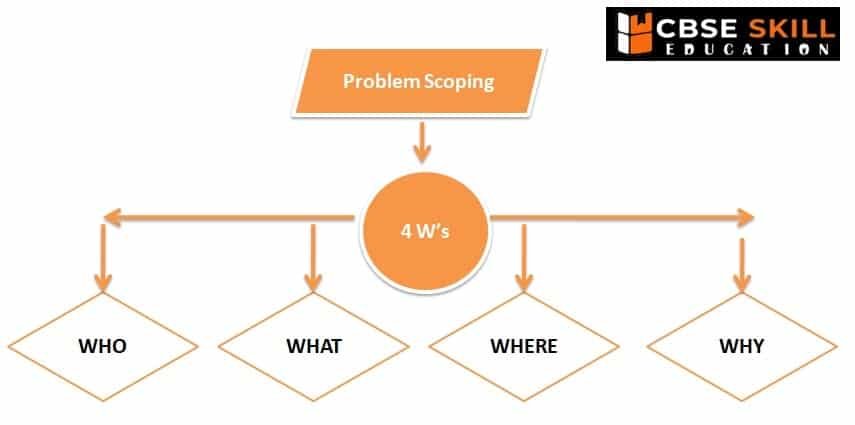
- Who – The “Who” element helps us to understand and categorize who is directly and indirectly affected by the problem, and who are known as Stakeholders.
- What – The “What” section aids us in analyzing and recognizing the nature of the problem, and you may also gather evidence to establish that the problem you’ve chosen exists under this block.
- Where – What is the situation, and where does the problem arise.
- Why – Refers to why we need to address the problem and what the advantages will be for the stakeholders once the problem is solved.
What is problem statement template
After you’ve completed the above 4Ws, make a summary of what you’ve learned. The problem statement template is the name for this summary. This template summarizes all of the important points in one place. So, if the same problem comes again, this statement will make it much easier to fix.

Example of 4W canvas for Pest Management
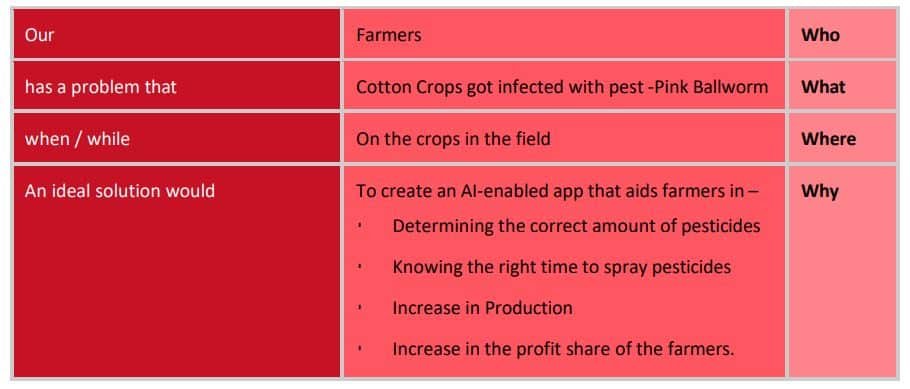
Let’s see one example How we can identify the problem using Brainstorming, 4Ws Problem canvas and mind map
To identify the problem, follow the following six methods to be used to address the problem:
1. Identify the Topic – First you have to select the topic. For example, Topic: “How to improve quality education in ruler area”
2. Brainstorm related problems – Brainstorming is a method for identifying and solving problems. It helps us come up with new ideas. To solve the problem, first we have to identify the problem related to quality education in rural areas.
- Student financial problem
- Teachers are not using technology
- Resources are not available
- Quality education problem belongs to ruler area only
3. 4Ws Problem Canvas – You can use the 4Ws problem canvas to identify the problem.
- What: What is the specific problem?
- Example: Students are not getting quality education in rural areas.
- Who: Who is affected by this problem?
- Example: Are students of the ruler area affected by this problem?
- Where: Where does this problem occur?
- Example: Ruler area with poor infrastructure?
- Why: Why is it important to solve this problem?
- Example: To improve literacy rate?
4. Create a Mind Map – Now you have to create a mind map of the above brainstorm-related problem.
- Financial problem – School fees, cost of study materials
- Technology – Poor internet access, computers are not available in classes
- Resources – Lack of study materials, limited teachers in school
5. Evaluate the prioritized problem – After the mind map, now you have to identify what the main problem is; for example, students are having problems in education due to limited internet connectivity and due to a lack of digital learning tools.
6. Set the goal for the project – After identifying the problem, now you have a clear goal to address the above problem. Now you can create an offline AI-powered application based on the “Offline Learning Platform” that can provide quality education in rural areas and help the students to overcome the internet connectivity barriers.
2. Data Acquisition
The method of collecting correct and dependable data to work with is known as data acquisition. Data can be in the form of text, video, photos, audio, and so on, and it can be gathered from a variety of places such as websites, journals, and newspapers.
What is Data?
Data is a representation of facts or instructions about an entity that can be processed or conveyed by a human or a machine, such as numbers, text, pictures, audio clips, videos, and so on.
There is two type of data –
- Structured Data
- Unstructured Data
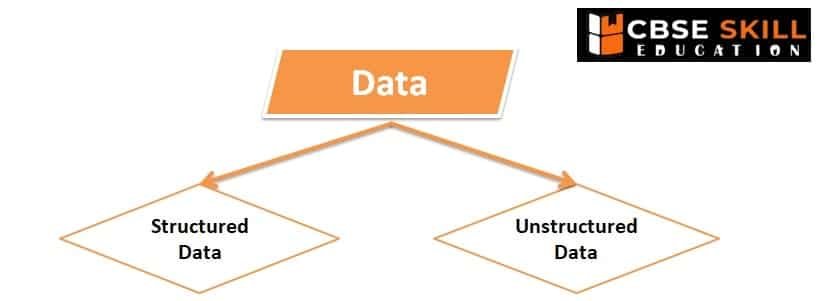
- Structured Data – When data is in a standardized format, has a well-defined structure, follows a consistent order, and is easily accessible by humans and program. This data is in the form of numbers, characters, special characters etc.
- Unstructured Data – Unstructured data is information that doesn’t follow traditional data models and is therefore difficult to store and manage. Video, audio, and image files, as well as log files, are all examples of unstructured data.
What is dataset?
Dataset is a collection of data in tabular format. Dataset contains numbers or values that are related to a specific subject. For example, students’ test scores in a class is a dataset.
The dataset is divided into two parts
- Training dataset – Training dataset is a large dataset that teaches a machine learning model. Machine learning algorithms are trained to make judgments or perform a task through training datasets. Maximum part of the dataset comes under training data (Usually 80%)
- Test dataset – Data that has been clearly identified for use in tests, usually of a computer program, is known as test data. 20% of data used in test data.
Acquiring data from reliable sources
There are six ways to collect data.
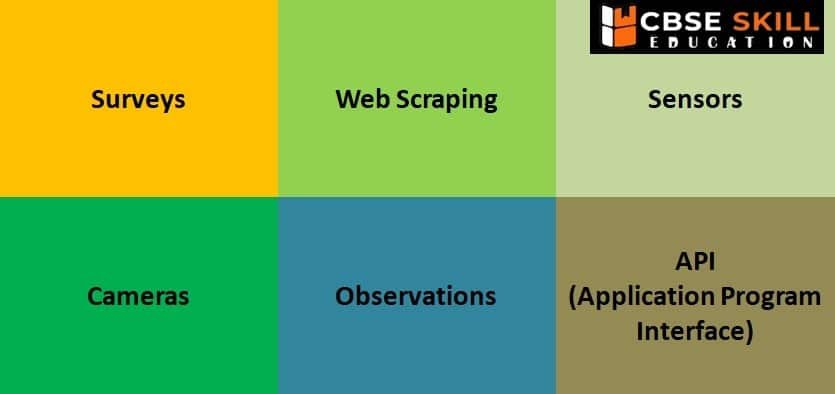
- Surveys – A research method for gathering data from a predetermined sample of respondents in order to get knowledge and insights into a variety of issues.
- Cameras – We can collect visual data with the help of cameras, this data is unstructured data that can be analyzed via Machine learning.
- Web Scraping – Web scraping is also known as data scraping. This method is used in AI to extract data from websites automatically and efficiently.
- Observation – Some of the information we can gather through attentive observation and monitoring.
- Sensors – With the help of sensors also we can collect the data. A device that detects or measures a physical property are called sensors, such as biomatrix.
- Application – An API is a software interface that enables two apps to communicate with one another.
3. Data Exploration
In order to better understand the nature of the data, data analysts utilize data visualization and statistical tools to convey dataset characterizations, such as size, amount, and accuracy. Data exploration is a technique used to visualize data in the form of statistical methods or using graphs.
Why data exploration?
Exploration helps you gain a better understanding of a dataset, making it easier to explore and use it later. It also helps to quickly understand the data’s trends, and patterns.
What is a data visualization chart?
Data visualization charts are graphical representations of data that use symbols to convey a story and help people understand large volumes of information.
The following are some of the most frequent data visualization chart and graph formats:

a. Column Chart – A column chart is a basic Visualization chart that uses vertical columns to represent data series. Because column lengths are easy to compare, column charts are an effective approach to demonstrate the changes in the data.
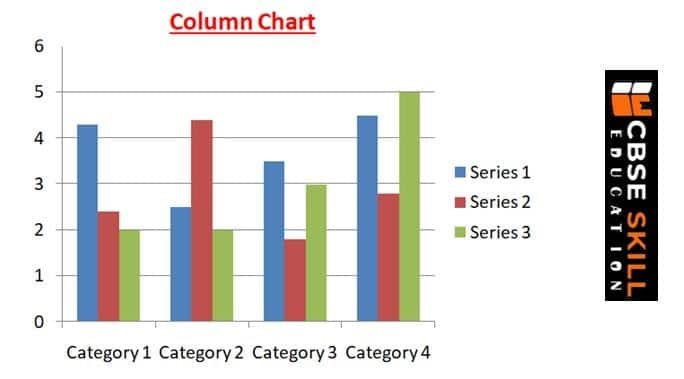
b. Bar Chart – A bar chart is a visual representation of category data. The data is displayed in a bar chart with multiple bars, each representing a different category.
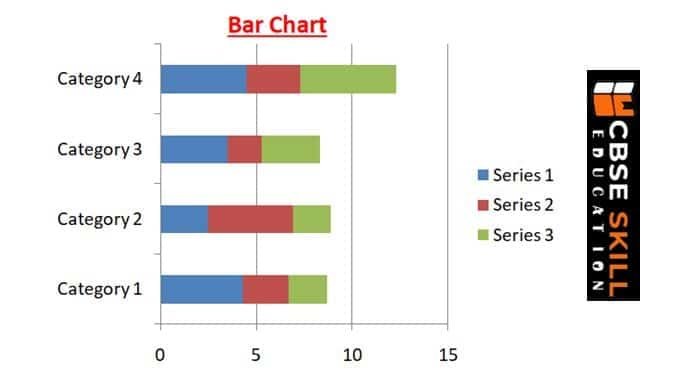
4. Modelling
Data modeling is a method to create a visual representation that helps to understand how the data is organized or managed in the organization.
What is data modeling?
An AI model is a program that has been trained to recognize patterns using a set of data. AI modeling is the process of creating algorithms, also known as models, that may be educated to produce intelligent results. This is the process of programming code to create a machine artificially. There are two different types of AI model –

Learning Based – Refers to AI modeling in which the developer hasn’t specified the relationship or patterns in the data. Random data is provided to the computer in this method, and the system is left to figure out patterns and trends from it. When the data is unlabeled and too random for a human to make sense of, this method is usually used.
Rule Based – The rule-based approach to AI modeling is when the developer defines the relationship or patterns in data. The machine follows the developer’s rules or instructions and completes its job properly.
Rule Based AI Model (Decision Tree)

Decision Tree in AI
The concept of Decision Trees is similar to that of Story Speaker. It’s a rule-based AI model that uses numerous judgments (or rules) to assist the machine in determining what an element is. The following is the basic structure of a decision tree:
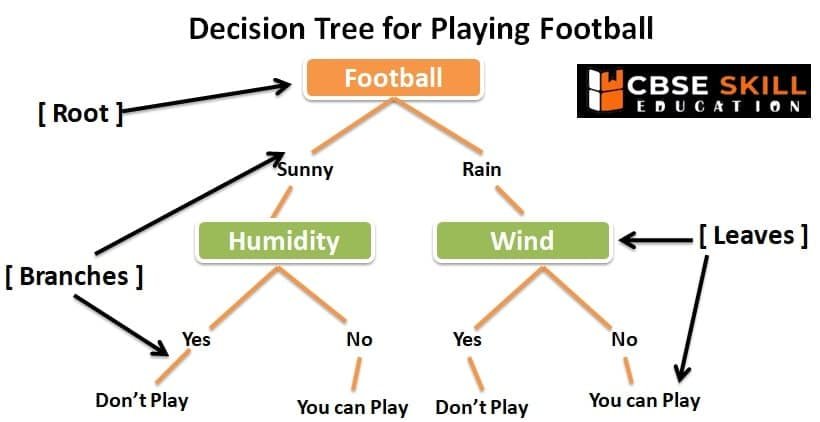
5. Evaluation
After a model has been created and trained, it must be thoroughly tested in order to determine its efficiency and performance; this is known as evaluation.
Evaluation is the process of understanding the reliability of any AI model, based on outputs by feeding test dataset into the model and comparing with actual answers. There can be different Evaluation techniques, depending of the type and purpose of the model.
Confusion matrix
The result of comparison between the prediction and reality can be recorded in what we call the confusion matrix. The confusion matrix allows us to understand the prediction results.
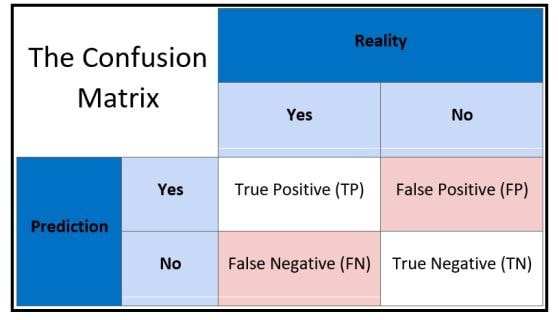
Various Evaluation Techniques
There are four different types of evaluation techniques –

What is Ethics in AI?
Many time machines have to make decisions about what is correct and wrong; ethics are guidelines or principles of AI that decide what is good or bad. The strong AI code of ethics can avoid bias and ensure the privacy of the users and their data.
Ethics helps the machine to understand what decision it has to take. Suppose one self-driving car has to decide between hitting a person or taking the risk of the life of a passenger; what decision will the machine have to take? Here the machine will respond based on AI ethics.
What is AI Bias and AI Access?
AI bias is also known as algorithm bias or machine learning bias. AI bias comes when a machine has learnt incorrectly or incompletely from the given data. For example, if an AI machine is trained based on male photos, then the machine will not recognise females accurately; here the AI bias will be generated.
AI access can create a gap between the society because AI enable device can be used by only upper class people because of the cost, here everyone donot have a opportunity to access the AI enable device.
Updated Class 9 AI Notes
Subject Specific skills Notes (40 Marks)
- Unit 1: AI Reflection, Project Cycle and Ethics
- Unit 2: Data Literacy
- Unit 3: Math for AI (Statistics & Probability)
- Unit 4: Introduction to Generative AI
- Unit 5: Introduction to Python
Employability skills Notes ( 10 Marks )
- Unit 1 – Communication Skills
- Unit 2 – Self-Management Skills
- Unit 3 – Basic ICT Skills
- Unit 4 – Entrepreneurial Skills
- Unit 5 – Green Skills
Old Subject Specific skills Notes (For revision)
- Unit 1 – Introduction to Artificial Intelligence (AI)
- Unit 2 – AI Project Cycle
- Unit 3 – Neural Network
- Unit 4 – Introduction to Python
Disclaimer: We have taken an effort to provide you with the accurate handout of “AI Reflection Project Cycle and Ethics Class 9 Notes“. If you feel that there is any error or mistake, please contact me at anuraganand2017@gmail.com. The above CBSE study material present on our websites is for education purpose, not our copyrights. All the above content and Screenshot are taken from Artificial Intelligence Class 9 CBSE Textbook and Support Material which is present in CBSEACADEMIC website, This Textbook and Support Material are legally copyright by Central Board of Secondary Education. We are only providing a medium and helping the students to improve the performances in the examination.
For more information, refer to the official CBSE textbooks available at cbseacademic.nic.in

GOOD FOR REVISION… THANKYOU
Very Helpful!!
Notes are very good
notes are very useful
Very Nice! These Notes Helped My Students A LOT before Exams!
CBSE Skill Education , Thank You For providing Quality Education
~Saint. Laste Na Pe’ Karumt
it is not very useful the having out of syllabus questions the worst
Thank you for your feedback. I recommend cross-checking it with the latest official curriculum. Also, please confirm with your subject teacher whether they are referring to the updated syllabus or not. This will help avoid any confusion regarding what is considered in or out of syllabus.
https://cbseacademic.nic.in/web_material/Curriculum26/sec/417-AI-IX.pdf
It is very useful and easy to understand also it’s very important + fun … Thank you… ???? … I am using this one day before my exams… But understood everything… Including all other chapters and topics…